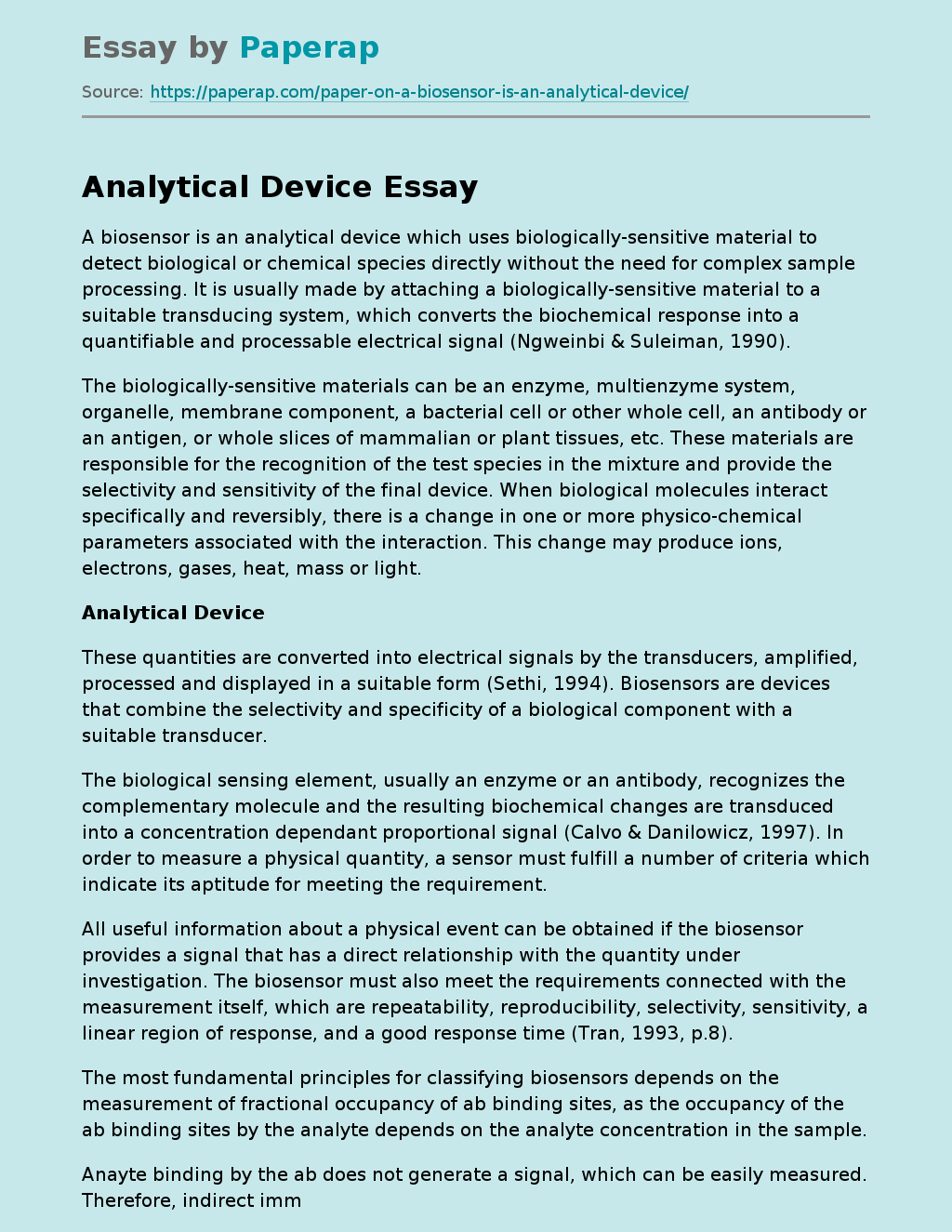Analytical Device
The following sample essay on “Analytical Device”: describing biosensor as analytical device and It’s benefits.
A biosensor is an analytical device which uses biologically-sensitive material to detect biological or chemical species directly without the need for complex sample processing. It is usually made by attaching a biologically-sensitive material to a suitable transducing system, which converts the biochemical response into a quantifiable and processable electrical signal (Ngweinbi & Suleiman, 1990).
The biologically-sensitive materials can be an enzyme, multienzyme system, organelle, membrane component, a bacterial cell or other whole cell, an antibody or an antigen, or whole slices of mammalian or plant tissues, etc.
These materials are responsible for the recognition of the test species in the mixture and provide the selectivity and sensitivity of the final device. When biological molecules interact specifically and reversibly, there is a change in one or more physico-chemical parameters associated with the interaction. This change may produce ions, electrons, gases, heat, mass or light.
Analytical Device
These quantities are converted into electrical signals by the transducers, amplified, processed and displayed in a suitable form (Sethi, 1994).
Biosensors are devices that combine the selectivity and specificity of a biological component with a suitable transducer.
The biological sensing element, usually an enzyme or an antibody, recognizes the complementary molecule and the resulting biochemical changes are transduced into a concentration dependant proportional signal (Calvo & Danilowicz, 1997). In order to measure a physical quantity, a sensor must fulfill a number of criteria which indicate its aptitude for meeting the requirement.
All useful information about a physical event can be obtained if the biosensor provides a signal that has a direct relationship with the quantity under investigation.
The biosensor must also meet the requirements connected with the measurement itself, which are repeatability, reproducibility, selectivity, sensitivity, a linear region of response, and a good response time (Tran, 1993, p.8).
The most fundamental principles for classifying biosensors depends on the measurement of fractional occupancy of ab binding sites, as the occupancy of the ab binding sites by the analyte depends on the analyte concentration in the sample.
Anayte binding by the ab does not generate a signal, which can be easily measured. Therefore, indirect immunosensors require a tracer as helper agent (Bilitewski, & Turner, p.118). In a biosensor, the transducer plays a physical role, and the biorecepor has the role of molecular recognition. The information decoded by the bioreceptor is converted into an electrical signal by transducer, using measuring techniques like potentiometry, amperometry, thermometry or photometry, all of which are based on the variation of physical quantities (Trans, 1993, p.10).
Analytical Device. (2019, Dec 05). Retrieved from https://paperap.com/paper-on-a-biosensor-is-an-analytical-device/

